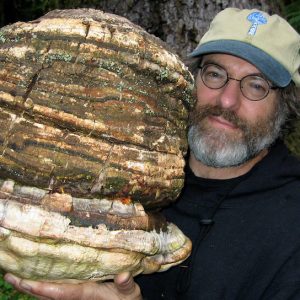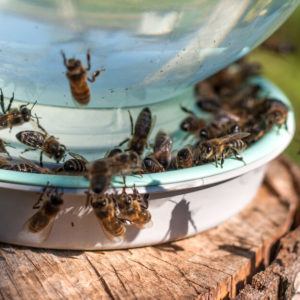
Recently, Health Canada announced a move to ban the use of certain pesticides containing chemical substances known as neonicotinoids. Scientists have long known such pesticides decimate bee populations, which is bad enough, considering several species have made the endangered list of late. However, current evidence exists showing how these substances harm more than just bees.
Researchers have found neonicotinoids present in the bodies of birds and other mammals as well. The substances have caused multiple hummingbird deaths. Scientists now fear what these substances could do to the human food chain as well as the planet’s ecology.
What are Neonicotinoid Pesticides?
The term “neonicotinoids” refers to a class of chemicals related in atomic structure to nicotine. And just as nicotine acts on the human nervous system, neonicotinoid pesticides act upon the nervous system of invertebrates such as insects. Although most previous scientific evidence pointed to the fact these compounds are less toxic to vertebrates like birds, mammals and humans, the recent death of myriad hummingbirds from neonicotinoid toxicity indicates the chemicals may not be as innocuous as once thought [1].
Although the Canadian ban focuses primarily upon three specific types of neonicotinoids, those who wish to be certain they do not purchase pesticides containing these substances can look for the following terms on the label:
- Thiamethoxam
- Thiocloprid
- Nitenpyram
- Imidacloprid
- Dinotefuran
- Clothianidin
- Acetamiprid
Beekeepers in Canada have denounced Canada’s ban as not extending far enough. For one, the ban only extends to clothianidin, imidacloprid and thiamethoxam. Secondly, even though the ban prohibits the use of these substances on flowering plants and trees bees tend to flock to, farmers may still use the chemicals on certain grain plants and home gardeners may continue to use them on plants grown in greenhouses.
Additionally, critics point out the ban gradually phases these substances out over a number of years, rather than banning them immediately. They note that the European Union banned the use of all three neonicotinoid pesticides already.
The toxicity of neonicotinoid pesticides to bees measures at 7,000 times higher than even the toxicity of DDT, a substance banned back in 1972 [2]. Given the toxicity level, it boggles the mind how these pesticides were approved for use in the first place. However, ignorance coupled with lobbying from manufacturers paired with the lack of international standards for the use of these chemicals allowed the crisis to worsen.
Neonicotinoid Pesticides Harming Hummingbirds
Even if neonicotinoid pesticides only proved harmful to bees, continued use of these substances would create serious ecological consequences. Bees pollinate 70 percent of the crop species responsible for feeding 90 percent of the human population [3]. Without bees, world hunger, already at epidemic levels, would increase dramatically.
Were bees to go extinct, our grocery stores would hold only half the varieties of fruits and vegetables they now do, as the plants pollinated by bees would perish. And it isn’t only humans who would go hungry. Animal species whose digestive tracts have evolved to sustain on a limited variety of foods would go extinct, also.
Nor are bees the only pollinators humans are losing to neonicotinoids, as the recent hummingbird deaths show. Pesticides and/or their metabolites can be measured in samples of blood, urine, breast milk, amniotic fluid or meconium in mammals [4]. Myriad animals like birds and butterflies who also pollinate plants have evidenced these metabolites when their corpses are examined.
The study that mesured these samples was focused on farming regions in the Fraser Valley and southern British Columbia, the main area where the red-throated rufous hummingbirds are found. The red-throated rufous hummingbird population has declined about 2.67 percent per year from 1966 to 2013 along with two other local species.
Few people who raise backyard chickens would pass Clucky the hen a drag on their cigarette, but neonicotinoid pesticides, once ingested, do impact animal tissue negatively. While proponents of the pesticides claim that the substances traverse the blood-brain barrier poorly if at all in mammals, this hardly renders the chemicals harmless. Humans who have ingested one type of neonicitonoid, imidacloprid, develop symptoms as quickly as 15 minutes after ingestion. Patients exposed to lethal doses experience symptoms similar to those in aspiration pneumonia as well as central nervous system disruption, coma and death [5].
Indeed, due to the use of neonicotinoids, more than half the native species of duck across Canada’s Saskatchewan region are now in sharp decline [6]. The region, once covered with wetlands, now predominates with agricultural grains treated with these chemicals. Plants absorb only roughly 5 percent of the pesticides sprayed on them, meaning the remaining runoff flows into waterways.
Will Other Nations Follow Canada’s Lead?
Even though critics insist Canada’s measure does not go far enough, it’s a step in the right direction. The European Union, in the meantime, began restricting neonicotinoids back in 2013, and, after a lengthy battle, recently voted to expand the ban in April of 2018 [7]. Primary opponents of expanding the ban included sugar beet farmers who claim no meaningful alternative to neonicotinoids exists. France, however, decided on the ban of all five neonicotinoid pesticides.
The U.S. has instituted no such bans at the federal level, although several states have drafted their own bans on certain types of neonicotinoids. Connecticut recently classified neonicotinoids as a restricted-use substance [8]. Maryland restricts use to only state-certified farmers and veterinarians. Minnesota restricts labeling, prohibiting manufacturers from advertising such pesticides as safe for pollinators, and California plans to revisit the issue this year.
Moving Toward Eco-Friendly Agriculture
Despite the protests of certain agricultural groups, safer alternatives to neonicotinoid-based pesticides do exist. One natural way to reduce pest infestation involves rotating crops. This method works because insect pests generally infest only one type of crop. Therefore, even if one crop, for example, a certain grain, becomes infested, if the farmer plants soybeans the following year, the grain-eating pests will starve [9].
Additionally, a host of natural pesticides and chemical versions based upon their derivatives exist. The disadvantage of these types of pesticides is many of them are crop specific, meaning horticulturists must invest in more than one to control all types of pests. However, when compared to the ecological disaster which would result from the loss of the earth’s pollinators, this inconvenience appears minor indeed [10].
A Safer World for Birds, Bees and All Life
Any step toward eliminating the use of neonicotinoid pesticides marks a step in the right direction, and Canada deserves applause for taking this crucial move. Hopefully, other countries, including the U.S., will follow suit, and soon, while there’s still time to save the birds and bees.









The article on neonicotinoids addresses the commercial uses that kill bees and hummingbirds, and is useful for those planting exotic species especially. When we cultivate native species of foods and ornamental plants and trees, we do ourselves a double service: we plant foods that have evolved along with the pests and are resilient, and we diversify our own diet.
But why are we so alarmed by pesticides killing European bees? What about the native bee species that the European bees have been displacing? We have been breaking up the food web with the introduction of exotic plants, particularly in monoculture, but also in the fauna that depend on native habitat. As a farmer, I produce for 1. Wildlife, 2. Neighbors, 3. Family and 4. the Market. I ain´t rich, but Lord I’m free, healthy and happy.
Thanks for doing all you do, Mark! I agree. Native bee species are incredibly important, and we need to think of them first and foremost!
obviously monsanto bayer causing the problem..driven by greed..they just dont care. Killing people too.
This needs to be stopped!ASAP! IVENSEEN A DECLINE IN MY BEES’ BUTTERFLIES AND HUMMINGBIRDS. People getting sicker and sicker! Stop this now!!
You state Humming bird populations decline since the 60s. Neonicotinoids were invented in the 80s and used more widely since the 90s. How then can they be rsesponnsible for killing hummingbirds in the 60s. If they are not, why don’t you discuss other reasons for the decline too?
They simply did a comparison of populations between 1966 and 2013, with more dramatic declines as the years increased. Don’t forget that other pesticides and herbicides like DDT were around long before neonicotinoids and those impacted bird populations as well.
Where is the link to the scientific study that PROVES neonicotinoids kill hummingbirds? Without that link your story is just that – a story.
Did you manage to find all the sources linked in the article that are hyperlinked for convenience of my readers? They’re in pink text, so when you hover over them with the mouse, you can click on the link to be directed to the study. Either text will be hyperlinked or numbers in brackets.
No linkagage at all between neonictides and hummingbird populations? What study is there? There is no study at all! Does this organization count on its readers not noticing that this entire article is based on a fraudulent premise? What a bunch of hogwash.
Did you manage to find all the sources linked in the article that are hyperlinked for convenience of my readers? They’re in pink text, so when you hover over them with the mouse, you can click on the link to be directed to the study. Either text will be hyperlinked or numbers in brackets.
I would also like an answer to the question as to what study links neo-nics to hummingbird deaths. You keep referring to the hyperlinks included in the article, but not one of them refer to a study showing any correlation between neo-nics and hummers. Rather than giving the generic “look it up” response, would you please provide a direct link?
Sure, Jeff. Here it is: https://www.ncbi.nlm.nih.gov/pubmed/29974994